The warmest parkas for men. How to choose a winter jacket to stay warm
How to choose winter jacket?
Editor's responseIf you are planning to buy a winter jacket, the main thing is to decide on the material from which it should be made.
Fur jackets
Photo: www.globallookpress.com
Fur jackets are the warmest, especially if they are made from natural fur. The warmest option is beaver and mink jackets. But a jacket made of astrakhan fur is suitable only for warm winter. Jackets made from natural fur are not cheap, so you should buy them in specialized fur stores, where the likelihood of buying a fake is much lower.
Down jackets
Down jackets are considered very warm winter clothing, but we must remember that they get wet easily, after which the down loses its heat-protective properties. Such a jacket should be impregnated with a water-repellent agent if it is made of a material that allows moisture to pass through. But most often such products already have factory water-repellent impregnation.
IN good down jacket there must be at least 20% feather, otherwise the fluff will clump into clumps. Eider down is considered the best filling for down jackets, while gray and white goose down take second and third places.

Photo: www.globallookpress.com
When choosing a down jacket, you should definitely pay attention to the inside of the lining; under no circumstances should feathers stick out from it. The quality of the down itself is checked as follows: fold the jacket and squeeze it tightly, then release it. The fluff should occupy approximately 70% of its original volume. The full volume of a real down jacket should be restored no earlier than after 20 minutes. The more time it takes, the better.
It must be remembered that proper care is required for a down jacket. It must be washed with special shampoos and dried quickly, on a horizontal surface, placing a heater under it. If you do not do this, the fluff may rot and the product will have yellow streaks.
Jackets with synthetic insulation
A down jacket is more suitable for a sports style of clothing, but if you prefer a different style, you can purchase a textile jacket with a fur or synthetic padding lining. You can wear it in both cold and warmer weather.
Unlike down jackets, jackets with synthetic insulation are lighter and thinner. Thanks to modern technologies, in a jacket with high-quality insulation you will not freeze even in the most severe frost. A huge advantage of such products is their price.
Leather jackets

Photo: www.globallookpress.com
Leather clothing looks beautiful and protects well from frost, but cold winter it must have a lining that can be easily unfastened. The advantage of this jacket is that it can be worn in cold and warmer weather. The warmest liners are made of mink or sheepskin. But be aware of fakes. Often the collar is lined with real fur, and the inside is lined with faux fur. You can check this by pulling out and burning a hair. If it burns completely and the smell of burning hair appears, then the fur is natural, and if the hair melts, then the fur is artificial.
An excellent material for a winter jacket is calfskin or sheepskin; it is soft and practical. To find out the quality of the leather, shake the jacket - the leather should not rustle. If you hear this sound, this is a sign that the leather was poorly processed or overdried, and it is advisable to refuse to purchase such a jacket.
When purchasing a leather jacket, be sure to check whether it has a water-repellent coating. This can be done in the following way: a drop of water drips onto the jacket; if the water rolls off, it means that the treatment has been carried out, but if the water has been absorbed, it means that the jacket has not been treated.
Price and quality
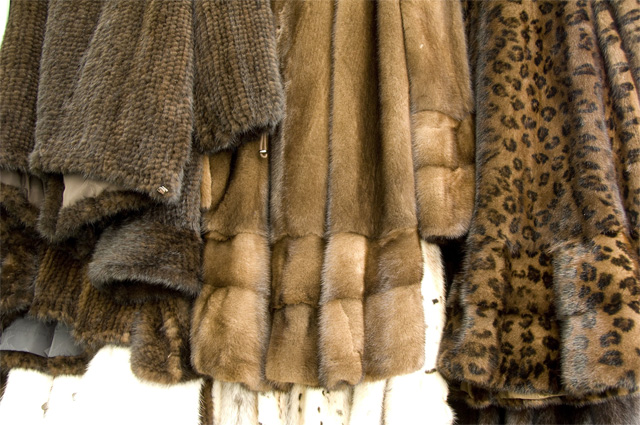
Photo: www.globallookpress.com
The price of the jacket will depend on the popularity of the brand, the country of manufacture, the newness of the collection, the filling and the material from which it is made. Jackets made in China may cost less, since there are many factories there that produce clothes under license from large brands. They cost the manufacturer less, so prices in stores are lower. When buying a jacket, you should pay attention to some details, in particular, the cut of the product and the evenness of the seams, and you also need to check all the zippers, buttons and other fasteners on the jacket.
The cold weather is approaching. Cold winds are already starting to blow from the north, making you want to quickly hide in cozy warmth new winter jacket. Yes, it's time to choose winter shoes and a warm coat.
The modern fashion industry offers many options for clothing that can protect from bad weather. Just remember that you shouldn’t go to the office or go out into the city at the ski park. For such cases, a traditional coat or mid-thigh length jacket is more suitable.
Those who know how to choose a winter jacket will never confuse a jacket and a jacket. The jacket ends at the hips and is unlikely to provide any real warmth. It cannot be worn over a thick sweater or blazer.
The jacket is made from thicker natural material. Its task is to warm its owner.
To stay warm when the temperatures drop below zero, listen to these tips on how to choose a men's winter jacket.
Material
To successfully choose a winter jacket , You must first learn to understand the materials. Materials such as wool and cashmere retain heat best. Cashmere is much warmer than wool, but it is an expensive and short-lived material. Therefore, when choosing winter clothes its merits turn out to be quite controversial compared to the strength of wool.
If you are looking for a really warm one, good jacket, choose an option with a thin layer of special insulation Thinsulate or goose down, sewn into a regular lining. This jacket will have an additional warm layer.
However, as a rule, a men's winter jacket made of wool or cashmere is lined with acetate silk. A jacket with such a lining fits comfortably over clothing, and the outer material itself retains heat well.
Size selection
However, before choosing a jacket, you need to decide on the size. It's pretty easy: just buy a jacket one size larger than your suit jacket. It is easy to move in such a jacket; it will not put pressure on the shoulders and around the neck.
The shoulder seam of the jacket should fall slightly below the edge of your shoulder. This will create a more beautiful silhouette if you wear the jacket over sports suit or a jacket. A men's jacket can be worn during the day instead of a traditional coat, putting it over a suit jacket. However, this is not accepted after 6 pm.
If you're unsure about your size and can't decide which jacket to buy, try it on over a blazer or thick sweater. This way you can see how the jacket fits and determine how comfortable you are in it. Try sitting on a chair and raising your arms. Bend over and tie your shoelaces. A new jacket should be comfortable in any situation, so try to give it a good test drive before purchasing.
Types of men's winter jackets
A winter jacket is designed to protect against cold and dampness; it is, first and foremost, a practical thing. Despite this, it may well be fashionable if its owner tries to keep up with fashion. And the existing variety of styles and materials can satisfy every taste.
When choosing a waterproof jacket, you should make sure that the seams are also waterproof. Otherwise, the jacket will still get wet, and you will be cold.
Pea coats are a classic and very popular option. Actually, this is the uniform of sailors, but today not only sailors wear them with pleasure. Many men consider a peacoat to be their main item winter wardrobe.
The peacoat is usually hip-length and has wide lapels. This is very warm clothes, since heavy, dense woolen fabric is used for its manufacture. Thanks to special treatment, the pea coat does not get wet.
Those who like to wear peacoats should choose the most small size, which, nevertheless, will allow them to feel comfortable in such a jacket, worn over regular clothes. In this case, the fabric should not stretch or bulge between the buttons. A jacket of this type visually enlarges the figure, so if you make a mistake with the size, the figure will look disproportionate.
Pea coats fit well on slimmer men, as they emphasize the waist and visually expand the chest and shoulders. Large men should avoid this style, as top part the case will look too massive.
A leather coat is a timeless classic in men's fashion. Many people value leather items because they last a long time and are profitable to buy. Men's winter leather jackets are considered one of the warmest. A properly sewn leather jacket retains heat well and prevents its owner from freezing. To prevent a leather jacket from getting wet, it must be constantly treated with special impregnations.

Leather coats or jackets are different styles, but the color range, as a rule, is limited only to black and brown flowers. The length can also be different: full length, mid-calf, knee-length, mid-thigh or waist-length. Short men should not wear too much long jackets or a coat, as they visually shorten the figure.
Those who avoid wearing leather items for ethical reasons (for example, vegetarians) can choose faux leather models. This jacket is cheaper, does not get wet, but it is not so warm.
Windbreakers
Windbreakers are worn by those men who prefer multi-layered clothing instead of one thick jacket. Windbreakers are suitable for any figure. Very often, such jackets are made waterproof. They protect well from strong winds. Jackets usually have a hood for added protection. External pockets have large flaps to keep contents dry. The hood, cuffs and bottom of the jacket have adjustable ties. Windbreakers are usually made from breathable materials such as nylon or polyester.
A parka is a waterproof, fully insulated jacket with a fur trim on the hood to protect your head from the cold. The hood is often removable, with a zipper or buttons. Down or synthetic fiber is used as insulation. The length of the jacket is usually mid-thigh or higher. Initially, parkas were worn over the head, but modern models have a zipper.
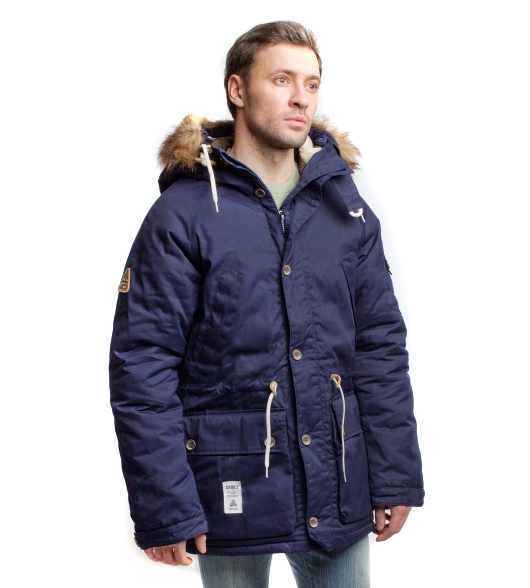
Insulated jackets
Insulated jackets have a waterproof top, lining and a layer of special insulation between them that retains heat. Down, soft feathers of young birds or synthetic material polyester are used as insulation. Jackets with any of these insulation will serve perfectly in any bad weather.

Although experts do not advise men prone to allergies to wear jackets with down insulation, many choose down. This natural material, and all natural materials are associated with luxury.
Natural down is a little more expensive than polyester. The amount of fluff in a pad is measured in grams. It takes from 30 to 800 grams of down to insulate a men's winter jacket. In some models, the warm lining is removable. It can be worn separately as a vest. And the top without insulation can serve as a windbreaker. Thus, by buying one thing, you buy as many as three universal wardrobe items.
The table below helps to compare the advantages and disadvantages of synthetic and natural insulation and determine which option will be the most suitable in each specific case.
The table below will help buyers determine key points, which you need to pay attention to when choosing insulation. By comparing the advantages and disadvantages of each option, the consumer will be able to decide which jacket he needs: with natural insulation or synthetic.
What to look for when purchasing
When purchasing, you should consider many factors. For example, length is important. Short men should refrain from buying long, knee-length jackets or long coats.
In such a coat or jacket, a man’s figure is lost, and he looks even shorter. But they don’t suit tall men too much short jackets, to the waist or barely covering the hips. This length visually lengthens the legs; they appear disproportionately long compared to the rest of the body.
When purchasing, be sure to pay attention to the clasp. Fastening and unfastening buttons takes a lot of time, and this is not easy to do with gloves. Small buttons are more difficult to handle than large ones. This is especially true for those who have problems with finger mobility. In these cases, models with zippers or buttons are better suited.
When purchasing a waterproof jacket, make sure the seams are also waterproof. There are two types of seams: taped only in certain places and fully taped. Products with partially taped seams are the cheapest option. Only individual seams are taped, for example, the edges of the sleeves. This is a completely acceptable option - except in cases where the owner of the jacket has to spend a lot of time in the pouring rain.
Fully taped seams are available in a more expensive version. But every seam in this product is taped, and every detail of the jacket is completely waterproof.
Conclusion
It is unlikely that anyone will enjoy walking a dog or a walk in pouring rain or frost. And it’s absolutely no good if the clothes get wet or don’t keep warm.
With the onset of winter, when the cold rains begin to fall and the temperature drops sharply, it is very important to have a warm, durable, waterproof jacket. For those looking, the choice is truly endless, from pea coats to leather coats and insulated jackets. Some models have a thick lining that retains heat well. Others, such as windbreakers, are thin and serve to protect against rain and wind. They are suitable for men who prefer to wear several layers of clothing to protect themselves from the cold.
This guide will help shoppers understand the variety of winter jacket options available.
Both down and padding polyester have excellent warming properties, but both of these materials have a number of differences, and therefore the choice in favor of one or another material depends entirely on what you need the jacket for. The same rule applies when choosing one or another insulating material: the insulating material is selected based on weather conditions and the goals that you set for yourself.
It’s very cold, and it’s hard to put on a hundred clothes - a down jacket will help out
The down filling is very light and can retain heat well. In addition, it is easy to compress and very compact. A jacket filled with down will keep you as warm as a fur coat in cold weather. In addition, a down jacket is the best option when, when choosing clothes, you also have to focus on its total weight. The disadvantages of down filling include the following: down does not have sufficient insulating ability, gets wet in wet weather, requires compliance the right conditions storage and washing so that the jacket does not deform.
 IN very coldy When the air is dry, it's time to put on a down jacket. Some models of down jackets have a special barrier (membrane) to protect them from moisture, which allows you to wear them comfortably even in wet weather.
IN very coldy When the air is dry, it's time to put on a down jacket. Some models of down jackets have a special barrier (membrane) to protect them from moisture, which allows you to wear them comfortably even in wet weather.
Synthetic material - ideal choice in wet weather
Synthetic winterizer is less sensitive to changes in weather conditions compared to down or specialized fiber filling. In addition, padding polyester quickly returns to its shape even after wearing the product for a long time. Moreover, it is very resistant to moisture. A jacket made of this material will keep you warm even if it gets wet. Jackets made with padding polyester can be washed and are much cheaper in price.
“Quality formula”: Buying a jacket with synthetic filling (video)
Jackets made from synthetic materials do have one drawback: jackets made from synthetic materials do not provide the same level of thermal insulation as a down jacket of exactly the same weight, and take up a little more space. But when there are temperature fluctuations, when there is snow and rain outside, it is better to give preference to a belly jacket with padding polyester.
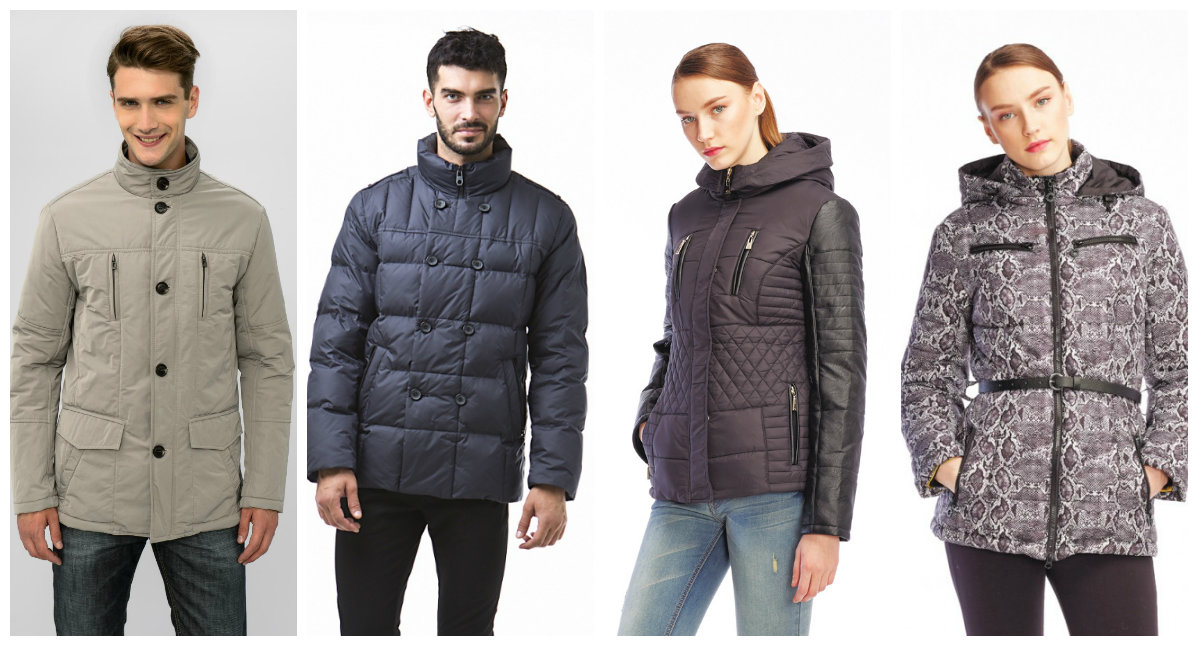 We also recommend looking at information about down jackets produced by Fjällräven, including such padding polyester models as G-Loft® Supreme and Supreme Microloft. But remember that when choosing a winter jacket, you need to consider many factors, not just the filling material, because your comfort directly depends on this.
We also recommend looking at information about down jackets produced by Fjällräven, including such padding polyester models as G-Loft® Supreme and Supreme Microloft. But remember that when choosing a winter jacket, you need to consider many factors, not just the filling material, because your comfort directly depends on this.
How to choose a winter jacket
A winter jacket is a piece of clothing whose main function is to keep us warm in cold weather, keeping us warm even when we stand still. A winter jacket keeps us warm regardless of our activity level.
What is a winter jacket?
A winter jacket, or down jacket, is essentially a regular down jacket filled with down or synthetic fiber, but, as a rule, it is much longer and equipped with an additional layer of thermal insulation material. A lightweight down jacket filled with specialized technical down or synthetic fiber is often worn under a windbreaker or windsopper sweater for sports, in particular aerobic training, to maintain warmth.
A winter down jacket, on the contrary, is intended for everyday wear and maintaining an optimal level of warmth even when a person is standing still.
A winter down jacket is suitable for walking on outdoors, it will keep you warm whether you're waiting for the bus at the bus stop, shoveling snow from your driveway, watching the kids play soccer, or spending the day ice climbing.
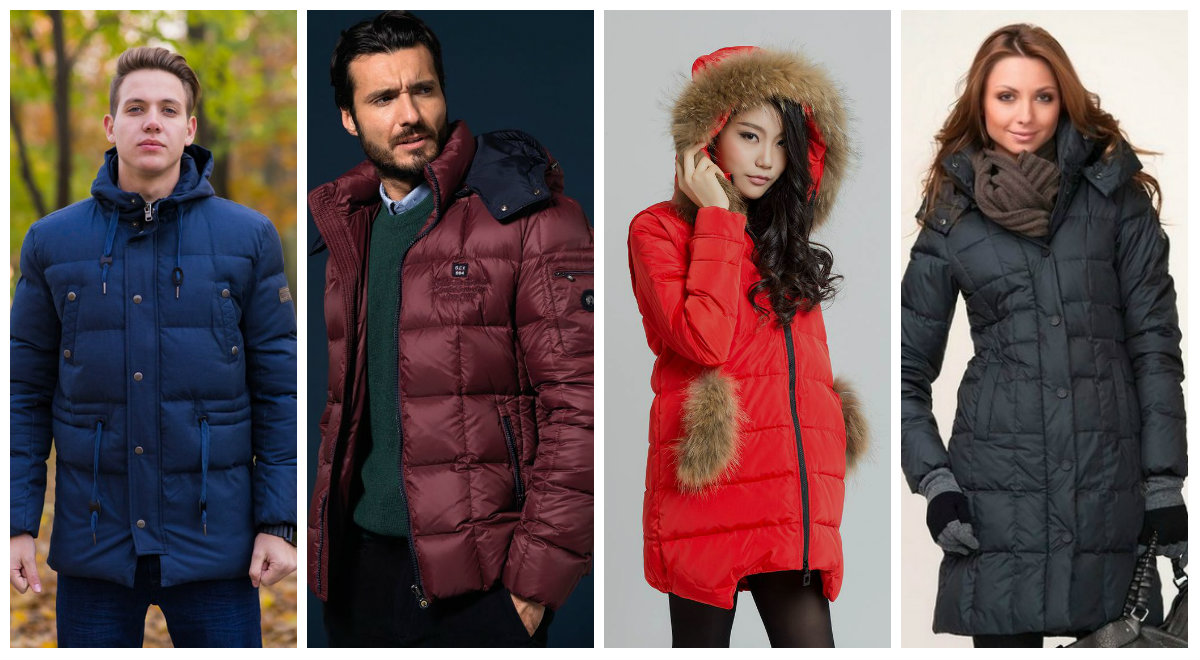 Since the winter down jacket is designed for everyday wear, it has good weather resistance and provides optimal protection against snow and light rain. Sometimes a down jacket has a waterproof/breathable membrane sewn into it to prevent water from getting into the fabric, and sometimes it is made from durable waterproof fabric with a special durable water-resistant coating.
Since the winter down jacket is designed for everyday wear, it has good weather resistance and provides optimal protection against snow and light rain. Sometimes a down jacket has a waterproof/breathable membrane sewn into it to prevent water from getting into the fabric, and sometimes it is made from durable waterproof fabric with a special durable water-resistant coating.
Check out the styles we liked the most in our round-up of the best winter jackets and round-up of the best women's winter jackets. Here you will discover thigh-length models, as well as a number of others stylish models that will keep you warm in any weather.
Types of Insulation Materials
Fashionable men's down jackets winter 2015 (video)
Remember the old trick that all the hitchhikers who used to travel in covered wagons used: they stuffed old newspaper into the tails of their coats to keep warm. This basic idea served as the basis for the creation of insulating material, and while crumpled newspaper seemed like a last resort, then down filling or synthetic fiber filling High Quality, used in modern products as an insulating material, no longer seems such a crazy idea. Winter jackets or jackets are filled with either down or synthetic fiber (or both!).
Pooh
Down is the main material that is popular in winter period. The main sources of natural down are ducks and geese, whose down provides good buoyancy and thermal insulation due to absorption large quantity air. The main advantages of down include: its ability to retain heat and its weight - it is much lighter than other materials and at the same time it compresses well.
Down also has its disadvantages. In particular, it is more expensive than other materials and does not have the necessary water resistance, meaning it is not suitable for wet weather conditions.
Elasticity of down and thermal conductivity of down
In most of our reviews, you will notice that we often refer to an indicator such as down elasticity. This indicator is also reflected in comparative table parka models as technical specifications products. What is it? Down elasticity is an indicator of down quality. Specifically, it is a unit of measurement for the volume of filler.
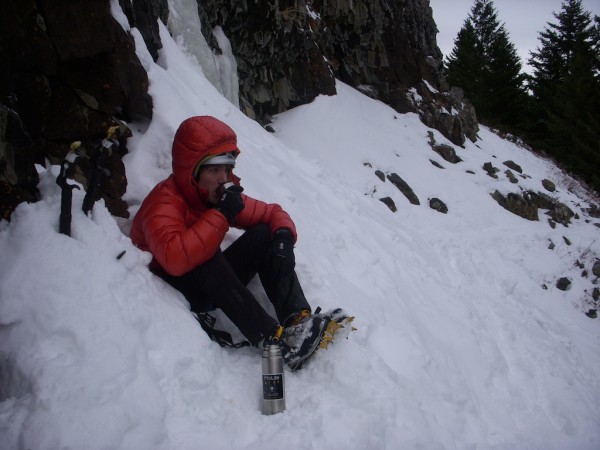 Imagine that you plucked a duck and filled a bucket with feathers. After shucking, heavy feathers with pieces of fibers and irregularities will sink to the bottom of the bucket, and only light feathers will remain on the surface, which will be used as high-quality down filler. The indicated figure, for example, 850, means the number of cubic centimeters that approximately 30 cm of fluff occupies in a tank with markings, which are compressed under the gravity of standard scales.
Imagine that you plucked a duck and filled a bucket with feathers. After shucking, heavy feathers with pieces of fibers and irregularities will sink to the bottom of the bucket, and only light feathers will remain on the surface, which will be used as high-quality down filler. The indicated figure, for example, 850, means the number of cubic centimeters that approximately 30 cm of fluff occupies in a tank with markings, which are compressed under the gravity of standard scales.
Simply put, the higher the elasticity of the down, the softer the down jacket is and the warmer it is relative to its weight compared to down, which has a much lower elasticity. Thus, 180 grams of European goose down 850 is much warmer and more compact than the same amount of European goose down 600.
There are many factors that make a down jacket warm, and the springiness of the down is just one of those factors. No less important is the weight of the filler. Filling weight is determined by the amount of filling used (visually determined by how thick the down jacket looks).
How to choose a quality down jacket - Advice from Everything Will Be Good (video)
Thus, a jacket with 240 grams of European goose down 650 will be warmer than a jacket with 60 grams of European goose down 800, despite the fact that in the first case filler is used Low quality. These two indicators - the elasticity of the down and the weight of the filler - give a clear idea of how warm a particular down jacket model will be.
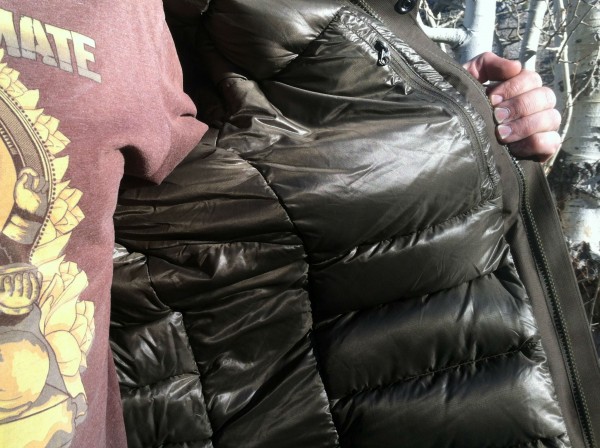 Production technology
Production technology
Down-filled parkas and down jackets are typically made using one of two production technologies. Occasionally, a combination of two technologies may be used simultaneously in one product. For more information, see our article Tips for purchasing a down jacket with down filling.
Stitching
This technology is used mainly for sewing lightweight down jackets and windbreakers, because this method of sewing is quite simple and the jacket will not be very heavy. The outer fabric is sewn onto the protective layer and stitched, resulting in inside peculiar pockets are formed, which are then filled with down. A jacket sewn in this way is considered less warm due to the lack of down around the perimeter of the stitched areas.
Stitching like three-dimensional partitions
When using this production technology, each stitched element in the form of a separate partition resembles a three-dimensional box in appearance. This makes the parka look less bulky, and more importantly, the down is evenly distributed around the perimeter of the entire partition, ensuring that the temperature is maintained at the optimal level.
How to choose a down jacket? (video)
This way there are fewer areas without down, making the jacket much warmer. The production technology for such jackets is much more complex, which is why they cost more. If your main goal is to maintain and preserve heat, then it’s time to think about buying just such a parka.
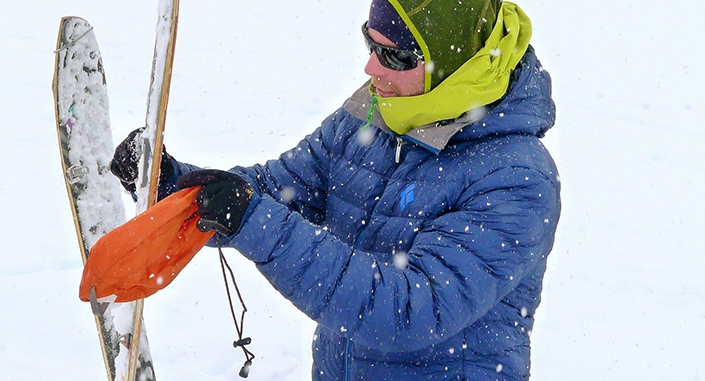 Waterproof down
Waterproof down
More and more companies are using specially treated down to produce jackets. chemical composition, which repels moisture, making down moisture resistant. So the Neutrino Endurance down jacket from the Rab company is an example of just such a down jacket, which already uses new type filler. Such a filler can increase the already high thermal insulation performance.
However, during testing various models down jackets, we decided that specially treated down filling would not cope with the tasks in wet weather conditions as well as filling made from synthetic materials. But such a filler will allow you to wear a down jacket filled with down more often.
Synthetic thermal insulation material
Synthetic filler is artificial material, which imitates the properties of down: it holds air between the small hairs that make up the synthetic fiber.
The main advantage of this filler is its ability to retain heat even when wet, since it does not clump like down and feathers when wet.
Due to this property, synthetic filling is often used to make jackets that will be worn in conditions with high humidity. This material is usually less expensive than down, but it is also quite heavy and less prone to compression than down.
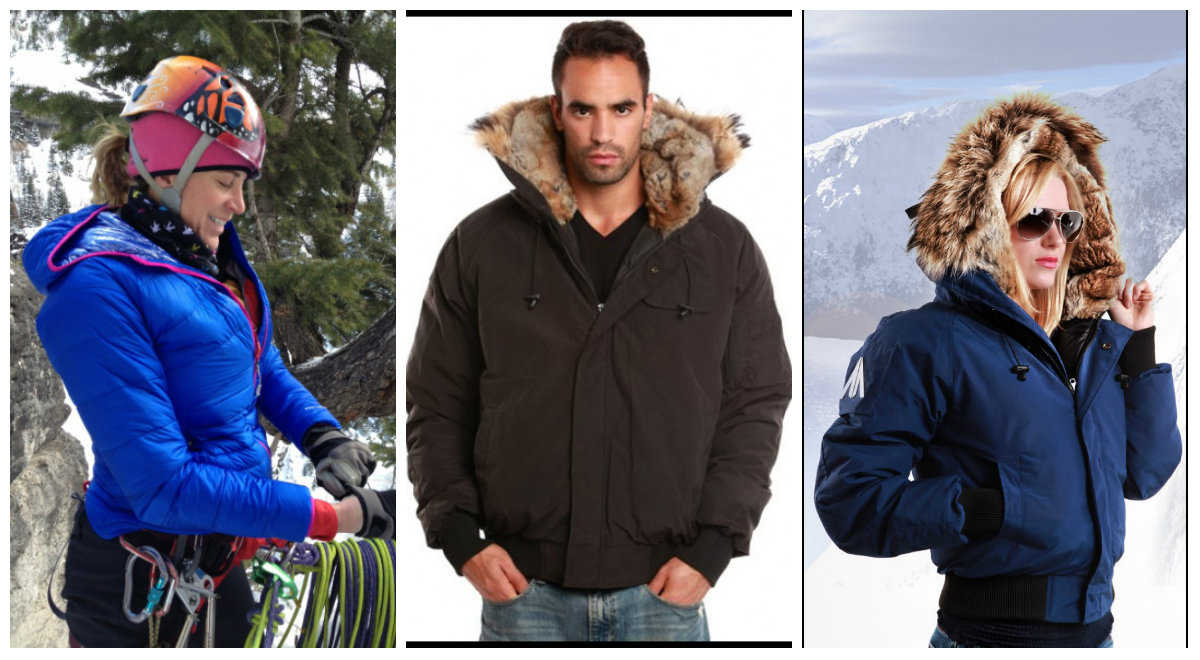 Other characteristics of a winter jacket
Other characteristics of a winter jacket
Outer fabric
An important component of any jacket is the outer fabric from which it is made, as it provides protection from wind and precipitation. So for areas like Southern California or the Pacific Northwest, where winters tend to be rainy, a jacket will do made of waterproof fabric, such as Gore-tex. For areas where winters are predominantly snowy, triggers made of durable, water-resistant materials are suitable.
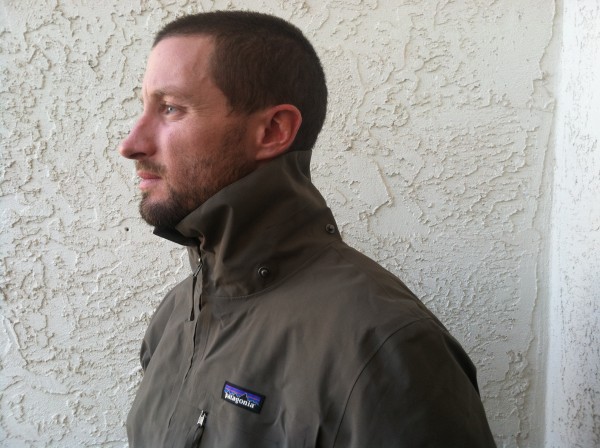 Durable fasteners securely fix the hood, which protects from snowy cold and crystallized ice.
Durable fasteners securely fix the hood, which protects from snowy cold and crystallized ice.
Hoods
The hood not only protects from rain and snow, it allows you to keep your head warm. We always recommend wearing a warm hat in rural areas, but an insulated hood will provide extra warmth if you need to walk longer distances. Some parka models come without a hood. Despite the fact that they look less bulky, if the jacket does not have a hood, this always implies that you need to wear a hat.
The most optimal is a hood that is adjustable so that it fits snugly to the climber’s helmet or winter hat, when necessary, and tightens tightly on the face if there is nothing on the head. Does the jacket zip right up to your nose? Is the hood of the jacket fixed in such a way that it covers the entire face, leaving only the eyes exposed?
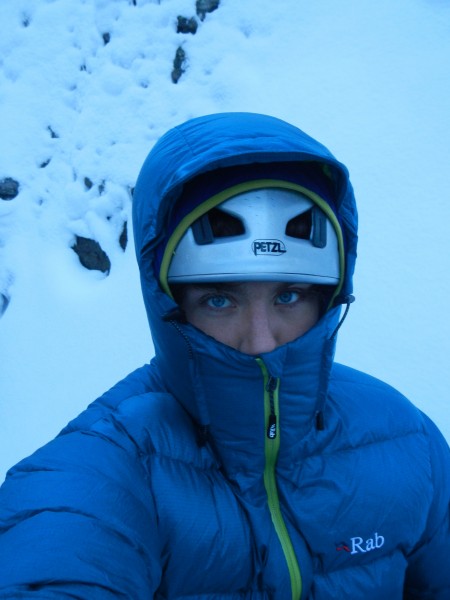 The temperature is below zero. Somewhere in Montana Neutrino Endurance Down Jacket from Rab.
The temperature is below zero. Somewhere in Montana Neutrino Endurance Down Jacket from Rab.
Style
Overall jackets
If you're looking for a jacket that will keep you warm if you suddenly decide to relax in a winter camp, live in a cabin somewhere in the forest, or finally go ice climbing, pay attention to work jackets. Such triggers usually perform several functions at the same time, for example, they ideally fit under a mountaineer’s helmet or helmet and have adjustable cuffs on the sleeves.
Stylish women's jackets 2015. Solid selection of jackets for women! (video)
Jackets for everyday wear
If you're looking for a jacket that's better suited for situations like scraping ice off windshield your car or a trip to the nearest grocery store for shopping, we recommend that you turn your attention to triggers for everyday wear. Essentially, a winter jacket is an item of clothing that we wear exclusively in winter, but winter is more than a period of active outdoor recreation or sports.
 Visiting snow-covered towns somewhere in the mountains or concerts given by visiting artists in the late winter evening- well, why not romance! And this is only part of what winter can offer us, but, you see, any of these events will be most memorable if you wear a warm jacket, and not the good old sweater from student times and thermal underwear.
Visiting snow-covered towns somewhere in the mountains or concerts given by visiting artists in the late winter evening- well, why not romance! And this is only part of what winter can offer us, but, you see, any of these events will be most memorable if you wear a warm jacket, and not the good old sweater from student times and thermal underwear.
A jacket for everyday wear can look no worse than a professional Ar'cteryx Therme down jacket, and if you want to look glamorous, opt for a camouflage down jacket with a hood, lined with fur and a flared yoke from The North Face Gotham. Casual jackets provide optimal comfort and tend to have plenty of pockets, but are also heavy and bulky enough for a trip into the countryside.
Other factors
Pocket inserts for overalls jackets
Climbers and mountaineers might be happy to be able to stash a pair of their rock shoes in the jacket's internal mesh pocket, if available. It's also a great way to protect your feet from getting cold when climbing a rock. Ice climbers could happily use these pockets to store a pair of gloves between sections. Plus, this pocket can easily fit a water bottle or snack. At the same time, they will not freeze.
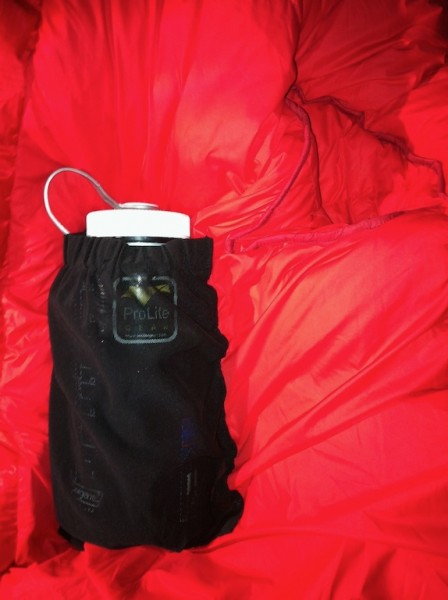 The Chillwave Down Jacket has a mesh pocket that easily fits a Nalgene water bottle.
The Chillwave Down Jacket has a mesh pocket that easily fits a Nalgene water bottle.
Details
Removable details such as a hood, fur lining or a zippered hood can add variety to a jacket's lineup, but they are also easy to lose or mix up.
Adjustable cuffs are very useful thing, so that they can be tightened tightly at the wrists if hands are not gloved or fitted under under gloves with long cuffs. They can also be expanded and tightened to release cold air.
Products using animal products
You can see jacket options for vegans who refuse animal products in the article “ Best models men's insulated jackets" in which Special attention paid to the DAS jacket using synthetic fill without adding down or padding with fur.
Liked? Support the site with likes!
Winter is a treacherous time of year. You look out the window and it seems like the sun is shining, but when you go outside it’s bitterly cold. That’s why it’s so important to have a warm jacket or down jacket in your wardrobe so you don’t get sick while traveling to work. It is difficult to determine what a men's winter jacket should be, because each of us has our own tastes, and the occasions in life are different. A short coat is suitable for going to a restaurant or for an important meeting, and if you are going to the skating rink, it is better to wear a short ski parka. When choosing a winter jacket, you need to pay attention to the following aspects of the purchase.
Material quality
The modern fashion industry every season offers representatives of the stronger sex men's jackets for winter, made from durable materials, water-repellent and windproof fabric, wool and cashmere. For the lining, acetate silk is most often used, which does not wrinkle, does not rub, and is an additional protective layer.
As for insulation, in this case manufacturers offer several options:
Natural goose down or loon feather, which are characterized by the highest heat saving rates;
Fur lining;
Modern materials: fibertek, waltherm, padding polyester, thinsulate, holofiber;
A special isosoft material with high frost resistance (from +5 to - 40°C), which is used when sewing Fred Perry jackets.
The insulation of a men's winter jacket should be thin and light, with fibers that easily align after washing so that the clothing does not lose its shape. Almost all synthetic insulation is made from hollow fibers that are intertwined at an angle of 25-45 degrees.
In addition to inspecting the insulation and fabric, you need to pay attention to the quality of tailoring and accessories, check the evenness of the stitching and the strength of the thread.
How to choose a size
There are several ways to quickly select a jacket in your size. You can buy a model that will be one size larger than the jacket, be sure to pay attention to the sleeve length. It’s better to look at the shoulder seam - it should fall below the edge of the shoulder. Under such a jacket you can wear a sweater or paita, jacket or sports jersey. Before buying a men's winter jacket, you should take it for a test drive - fasten all the buttons and zippers, raise your arms, move around, sit down. Comfort when choosing a jacket is no less important than stylish design or heat-saving characteristics. Eg, Fred Perry jackets meet all of the above requirements, which is why they are a huge success.
Briefly about the models of winter men's jackets
There are several popular types of men's winter jackets
Peacoats. This classic version winter jacket with mid-thigh length and wide lapels. Typically, a pea coat is made from thick wool fabric treated with a moisture-repellent composition. Features of the cut make male figure in a pea coat it is more massive, so this model is not recommended for tall and overweight men.
Leather jackets. This type of winter clothing is quite popular due to the variety of models, elegant appearance and good heat-saving performance. Color palette often monochrome, these are various shades of black, gray and brown colors. Too long leather jackets by coat type last years are not successful. For those who prefer Office Style, manufacturers offer jackets with a pilot style, and for men leading an active lifestyle - shortened models.
Windbreakers. To create this type of winter men's jackets Waterproof fabric is used that provides good protection from wind. For additional protection, the jacket has a hood, spacious pockets with closing flaps and cuffs with fasteners. Windbreakers are light and spacious, but they are suitable for those who prefer sport style or spends a lot of time driving.
"Parks. An insulated jacket with a hood, which has a fur trim. The length of such a men's jacket is usually to the middle or just below the thigh, and the fabric used for sewing it is waterproof, dense. A parka is a lightweight version of a down jacket, more fitting to the figure, with a thin layer insulation.
Insulated jackets. This type of men's winter jackets includes models with a waterproof top layer, internal insulation and a thick lining. There is a separate system for sewing insulated men's jackets, where one model can use from 30 to 800 grams of down. Oversized down jackets remain lightweight and extremely warm.
“Look how well the down jacket fits on you, warm, warm, no doubt,” the saleswoman habitually jabbers, serving another customer who has come to warm up before the harsh Siberian frosts. It’s up to you to take the word of a nice consultant or try to figure out for yourself exactly what temperature a winter jacket is designed for. In this material we will briefly look at the main insulation materials used by jacket manufacturers, from the point of view of their ability to warm the wearer in cold weather.
Fluff and feathers
It so happens that almost each of us habitually calls any winter jacket a “down jacket,” although this is only true for a certain part of the representatives of the winter jacket. outerwear. Naturally, only a jacket that uses natural bird down and feathers as insulation can be called a down jacket.
Most often, eiderdown or goose down is used in outerwear. On the label imported manufacturers it is denoted by the word down. Next to this word is feather - “feather”. The ratio of the first and second ranges from 70:30 to 85:15, the more fluff, the warmer and heavier the product.
The warmest and most expensive eider down. Such down jackets can cost several tens of thousands of rubles. The thoughtful cut of the gasket with filler also increases the price of the product. For example, to prevent the fluff from clumping inside the product and coming out, it is sewn into special bags, which are then evenly placed inside the lining. To avoid cold bridges in the seams, competent manufacturers lay bags of fluff overlapping or glue the seam spaces with special compounds. When choosing a down jacket, inspect the seams, remember the product slightly - there should be no sharp ends of feathers or down sticking out of it.
The advantage of down jackets is their high thermal insulation rates, like all natural materials. But they require especially careful care when washing or cleaning. At the same time, natural material serves as an excellent breeding ground for dust mites. It is best not to purchase low-quality down products at all, since problems during wear (feathers and down that come out and become tangled) will negate the pleasure of warmth.
Viva synthetics!
Perhaps the most common fillers for warm jackets today are synthetic. Their use is justified by ease of maintenance, relative affordability and good thermal insulation properties.
One of the most common insulation materials for outerwear is synthetic winterizer. It has a small volume and does not crumple when worn, but a jacket with padding polyester can save you from frost of a maximum of 10-15 degrees.
A more frost-resistant insulation is holofiber. It is more voluminous - products with it look plumper, which may not be to the taste of fashionistas. But the obvious advantage of holofiber is that it can easily warm the owner at temperatures up to 25-30 degrees below zero.
IN Lately Products based on new generation synthetic insulation materials, such as Fibertek, Waltherm, Thinsulate, etc., are being widely sold. All of these are developments of foreign companies, which were originally used in the sewing of military and sportswear. They owe their heat-saving properties to synthetic hollow fibers, which have high degree elasticity. Products with such fillers may not be inferior in thermal insulation properties to down jackets.
The most popular filler is Thinsulate, developed by the American company 3M. This is a very light and warm material that recovers well after washing and, despite its artificial origin, allows the body to breathe. In terms of cost, products with Thinsulate as a filler are close to jackets based on natural down.
Typically, the label of a product with a synthetic filler contains the word Polyester. This means with a 90% probability that there is padding polyester or holofiber inside. The latter, as already mentioned, is more voluminous and warm.
By the Thinsulate inscription you will unmistakably identify Thinsulate. Another modern insulation material that is most often used in sportswear, Valtherm will be designated as Valtherm. By the way, experts advise purchasing products with Waltherm with a density of at least 200-250 units for the winter.
Products filled with natural down are best dry cleaned. When washing down jackets, use the gentle cycle or hand wash them without soaking or wringing. When washing by machine, experts advise putting a couple of tennis balls in the drum: they will absorb excess moisture and roll over the jacket during washing, preventing the fluff from falling off.
What does the label say?
The label of the factory product must indicate the material from which the top of the jacket is sewn, the material of the filling and lining. The outer fabric can be windproof or waterproof, which will certainly increase wearing comfort.
The abbreviation CLO and the number from 1 to 3 will indicate the thermal insulation properties of the product. Thus, a down jacket with 1CLO is designed for temperatures down to -15o C, 3CLO - up to -40o C.
In addition to the label, many large manufacturers supply their products with a special booklet, which describes in detail the properties of the filler and upper fabric.




